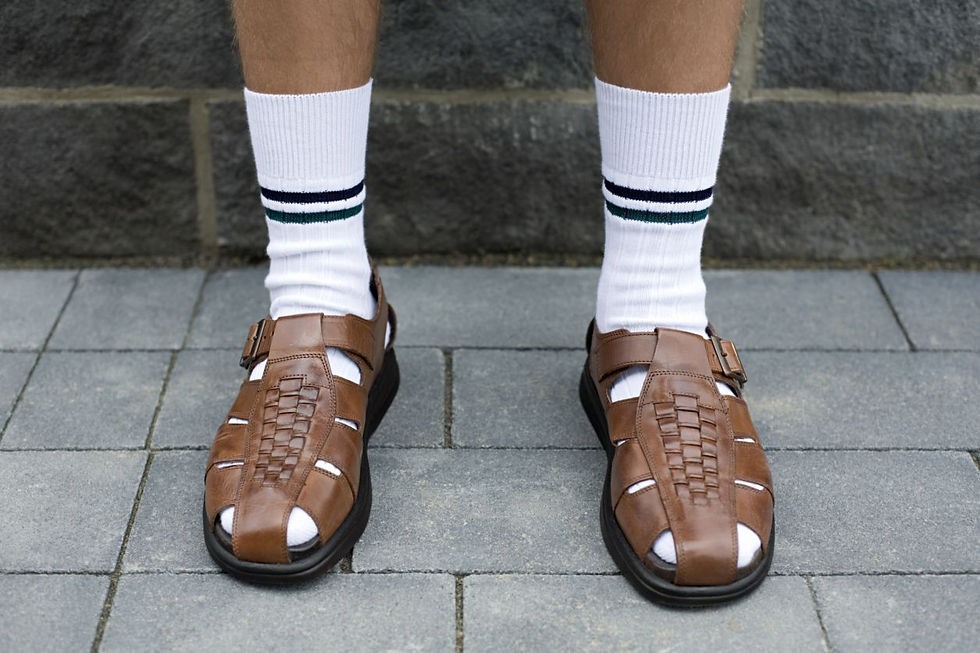August 6, 2024

As a foot nurse with years of experience tending to all sorts of feet—from dainty to downright Herculean—I've seen firsthand how the simple choice of wearing socks or not can impact foot health. So, let’s explore the sock vs. no sock debate and see what's best for everyone, including our senior friends.
First, let’s talk socks. Socks are like the unsung heroes of foot care, quietly working behind the scenes to keep your feet happy and healthy. They provide a barrier between your feet and your shoes, reducing friction that can cause blisters and calluses. They absorb sweat, keeping your feet dry and less prone to fungal infections like athlete’s foot. Socks also offer additional cushioning, making those long days on your feet a bit more bearable.

For seniors, wearing socks can be especially important. As we age, our skin becomes thinner and more fragile, making it more susceptible to injuries. Socks can provide a layer of protection against cuts and abrasions. For those with circulation issues, compression socks can enhance blood flow and reduce swelling, which is crucial for overall foot health.

But not all socks are created equal. Cotton socks, while comfortable, tend to retain moisture, which can create a breeding ground for bacteria and fungi. On the other hand, synthetic fibers like polyester and acrylic wick moisture away from the skin, keeping your feet drier. Seniors should look for socks with non-slip soles to prevent falls and injuries.
Now, let's consider the no-sock camp. There’s a certain freedom to going sockless—an airy, barefoot vibe that many find irresistible, especially in the warmer months. Proponents of this lifestyle argue that it allows feet to breathe better, reducing the chances of sweaty, smelly feet.

However, going sockless is not without its pitfalls. Without that protective barrier, your feet are more susceptible to blisters, calluses, and even infections from the constant rubbing against your shoes. Shoes without socks also tend to accumulate bacteria and odor much faster. If you must go sockless, consider using foot powders or antiperspirant sprays to keep moisture and odor at bay. Seniors, in particular, should be cautious as their feet may not heal as quickly from injuries or infections.
For the fashion-conscious, the no-show or invisible sock is a fantastic compromise. These low-profile socks give the appearance of being sockless while still providing the benefits of wearing socks. They’re perfect for loafers, boat shoes, and other styles where visible socks would be a fashion faux pas.


In the end, whether to wear socks or not boils down to personal preference and lifestyle.
If you’re an athlete, a senior, or someone who’s on their feet all day, socks are your best friend. For those leisurely beach strolls or quick errands, going sockless might be just fine. The key is to listen to your feet. If they’re blistering, sweating excessively, or just feeling uncomfortable, it might be time to rethink your sock strategy.


Remember, happy feet make for a happy life. So whether you’re a sock enthusiast or a barefoot bandit, taking care of your feet should always be a priority. And if you’re ever in doubt, consult a foot care professional—they’re here to keep your feet in tip-top shape!

Comentarios